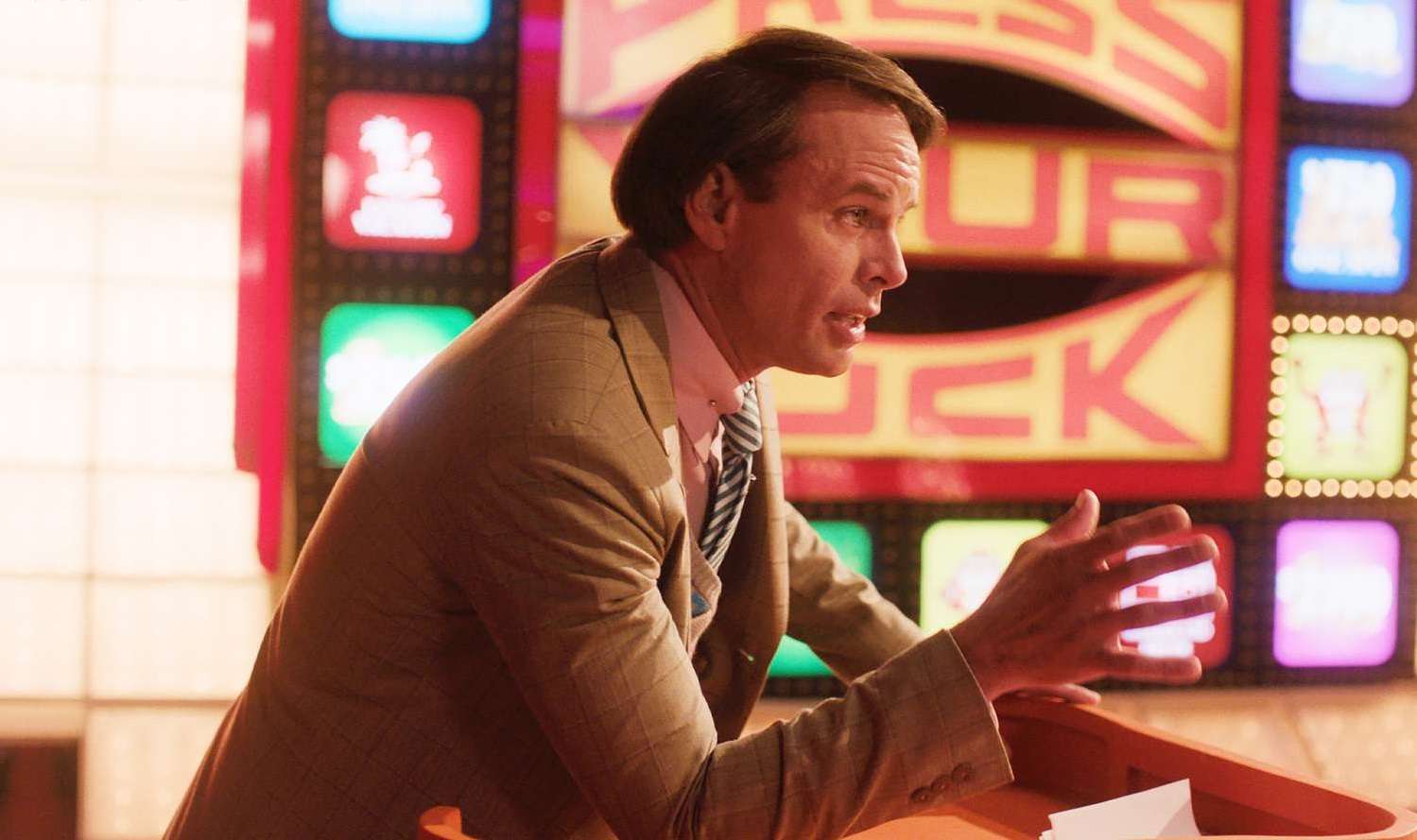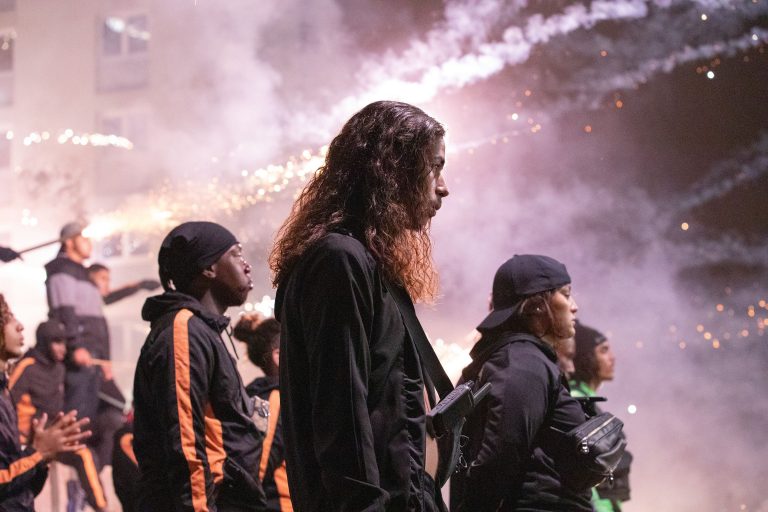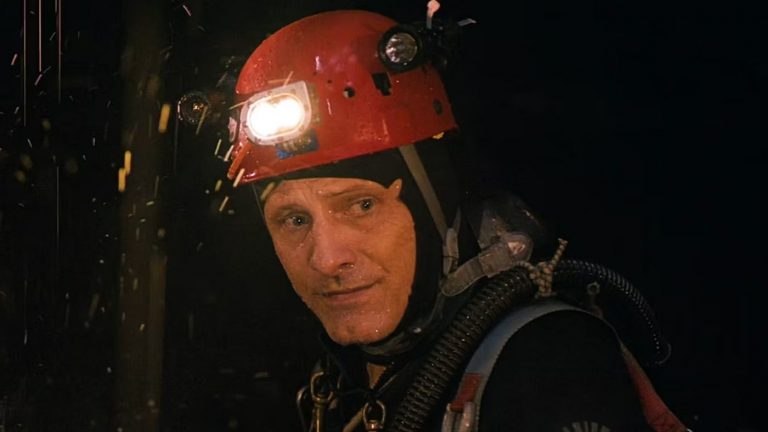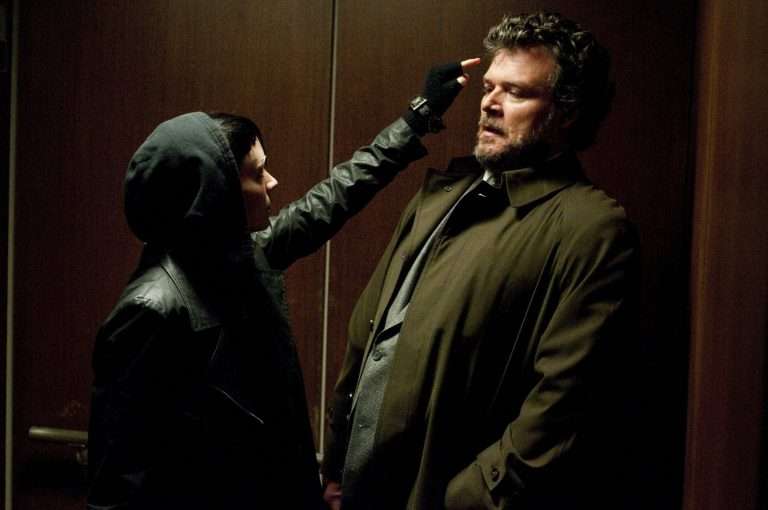“The Luckiest Man in America” (2025) feels like a time capsule to a world we have left behind. Directed and co-written by Samir Oliveros, it is based on a true story from 1984 when an ice cream truck driver earned a fortune on a television game show. Most of its runtime is devoted to recreating the events from this well-known scandal. It stars Paul Walter Hauser as the said show contestant Michael Larson, while David Strathairn, Shamier Anderson, Walton Goggins, and Patti Harrison round out the remaining central cast. Through their characters, the film critiques the venerated American Dream.
Spoilers Ahead
The Luckiest Man in America (2025) Plot Summary & Movie Synopsis:
Written by Maggie Briggs and Samir Oliveros, “The Luckiest Man in America” follows Michael Larson’s game show appearance that earned him a fortune, much to the network’s chagrin.
What happens in ‘The Luckiest Man in America’?
The film revolves around Press Your Luck, an American game show from the 1980s, which included three contestants vying for a big prize. They were expected to select one of the options from a game board, which was believed to be randomized. One of these meant bad luck. However, Michael Larson (Paul Walter Hauser) found five hidden patterns within this board that can ensure his success every single time. At the time, that seemed unusual for an ice cream truck driver who could barely make ends meet. However, that didn’t stop Michael from choosing just the right kind of buckets to keep earning more and more.
How did Michael Larson land on the game show?
According to the film, Michael Larson arrived at the audition in LA without an appointment. He had been trying to be on the show, hosted by Peter Tomarken (Walton Goggins), for a long time. So, he assumed someone else’s personality to sneak into the audition room. He told tall tales about himself to the television executive Bill Carruthers (David Strathairn) and his associate Chuck (Shamier Anderson). However, Sylvia (Maisie Williams), one of their younger employees, realized this in time and brought it to Bill’s attention.
Even then, Bill decided to choose Michael since he thought this ambitious hustler might be perfect to draw more eyeballs to their network. For Bill, Michael seemed like the perfect “weirdo” who would make people tune in to the show or keep them hooked to the screen. At the time, Bill didn’t know about Michael’s expertise. So, he chose Michael as a contestant only based on his personality.
What happened in Press Your Luck with Michael Larson?
Michael Larson joined the Press Your Luck show, with two other contestants, dubbed Janie (Patti Harrison) and Brian (Brian Geraghty). The film shows Michael not being at his best when trying to answer the initial rapid-fire questions. He presses the buzzer early but strikes his luck only after a commercial break. During the break, he urges Sylvia to let him speak with his daughter. Even though contacting anyone outside is prohibited by the game’s rules, Michael persuades Sylvia against it. Unfortunately, she doesn’t pick up the phone. So, he has to return to the set without speaking with her.
Brian gets up on the set, determined to prove himself. Since he has earned nothing by then, he gets to hit the buzzer. That’s when he starts striking gold. He wins something every single time, and the number reaches a worrying point for the executives who presumably earn less than that. So, they hope he stops his streak by allowing other contestants to hit the buzzer. However, he continues making the right choices to the point that execs wonder whether someone is helping him. They ask a crew member to check if Michael is wearing an earpiece, but that’s not the case. So, they wonder how he does all this.
The Luckiest Man in America (2025) Movie Ending Explained:
Why does the network claim Michael Larson is a fraud?

The network execs get worried by Michael Larson’s winning streak and suspect he is somehow scamming them. Chuck breaks into Michael’s van to find a collection of videotapes of their show. Then, he looks at the footage of Michael’s appearance to realize something strange: Michael gets happy about his win a few moments before he wins. So, Chuck realizes that Michael is making the right choice and it’s not a stroke of luck. Bill admits that this means Michael has cracked his five patterns and is using them to earn more and more. So, internally, he declares Michael a fraud.
Soon, the higher execs get involved in this matter, worried about its larger consequences. In that situation, Bill throws Chuck under the bus by firing him, even though it was Chuck who brought Michael’s truth to his attention. Yet, they suddenly decide to pivot after Chuck gets Michael’s ex-wife Patricia (Haley Bennett) on a call. Unlike Michael’s expectations, she doesn’t show him any love or affection. Instead, she criticizes him for his addiction to similar get-rich-quick schemes. It affects his further performance and kills his mojo. In that situation, Bill’s junior offers another strategy.
Why is this film about the American Dream?
Bill’s junior says instead of shaming Michael, they should promote him as a sign of the American Dream. After all, he represents the rags-to-riches storyline that America loves. The seniors agree to this strategy, but it doesn’t necessarily help them anymore, because Michael stops hitting the buzzer. Still, in the end, he is declared to be the lucky winner. Patricia, who watches it from her home, gets emotional. She realizes that he is doing all of that to get back with his family. However, on the call Chuck made happen, she asked him to sign the divorce papers. So, even if Michael earns all that fortune, he might not get to do what he hopes to do with it: to celebrate this success with his family and to see his daughter proud of him.
The Luckiest Man in America (2025) Movie Review:
As said before, “The Luckiest Man in America” becomes a time capsule to a bygone era where television was the epicenter of pop culture, at least the American one. Much of its credit goes to the production design that gets the time-appropriate details just right without letting it be the focus in itself. Instead, what stays in our minds after the credits is Paul Walter Hauser’s elaborate performance that examines this flawed but complicated man. While other script elements help present his anguish, Hauser’s performance makes it profoundly effective.
The film established most of its emotional beats just right, including how nervous the contestants were to walk on the stage and how out of breath the execs got by Michael’s winning streak. It also gives an understanding of Michael’s financial situation since he bargains even on a thrift store coat to wear during the telecast. He likely lives in the van where he sells ice cream. For the same reason, he also represents a “regular man” that the audience might have found relatable. That ties in with the themes of the American Dream, which thrives on the aspirations of underdogs.
The script brings out seemingly minor details without shoving them down our throats. It also handles the workplace dynamics well enough to point us toward their inherent vein of opportunism. Due to these creative choices, the film becomes a better character-driven analysis of a broken man and a critique of flawed American ideals than presenting how sensational his appearance seemed at the time.







